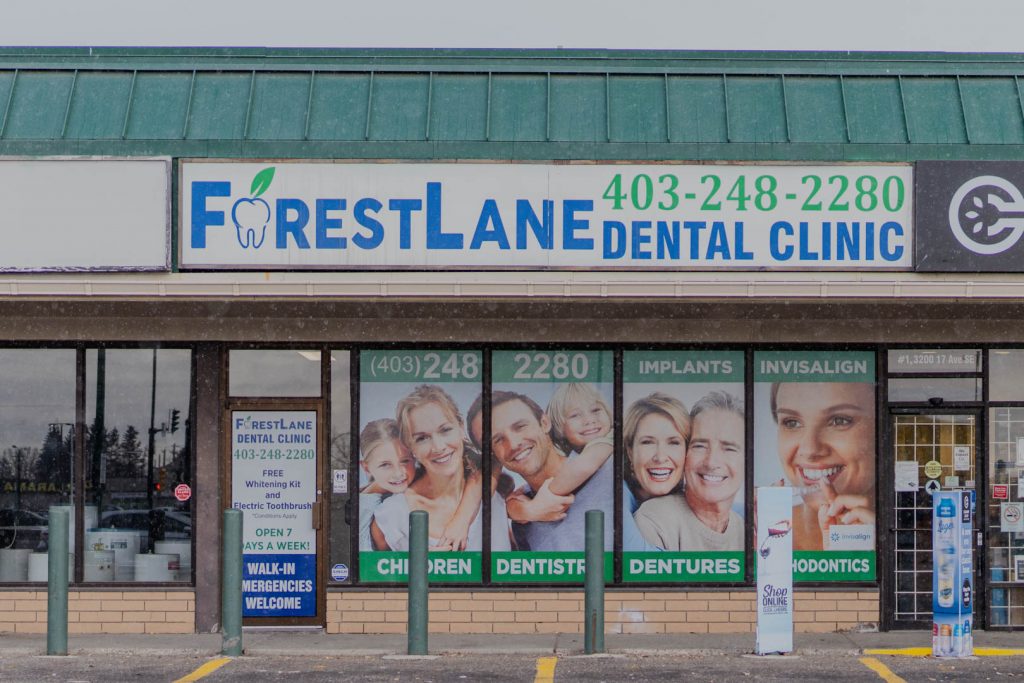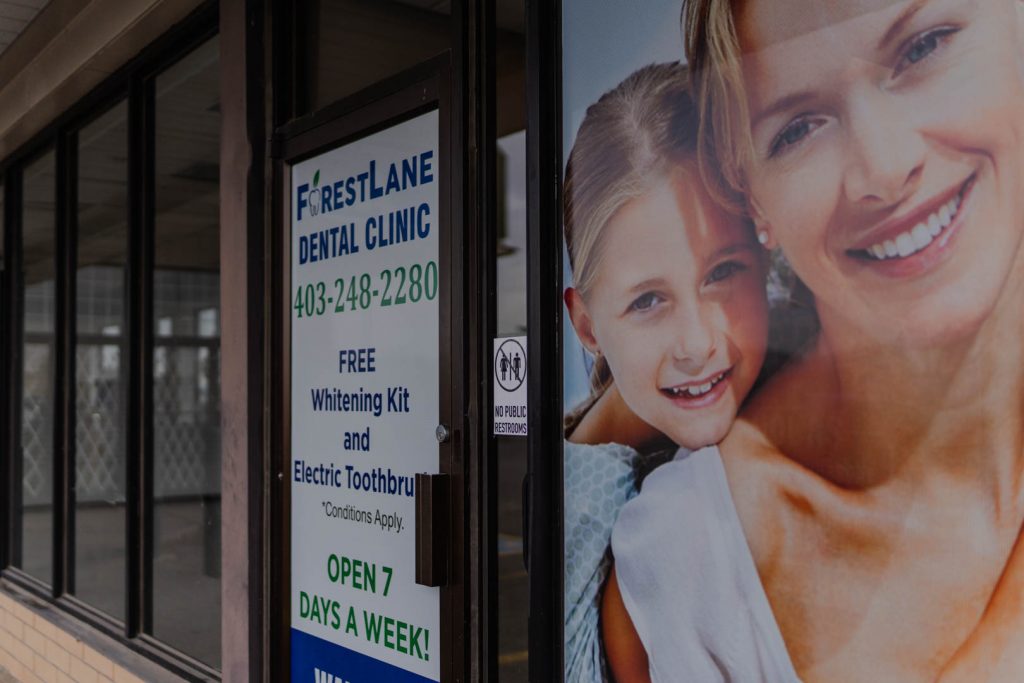Forest Lane Dental is pleased to offer children’s dental care and orthodontics to patients of ALL ages and stages of life. From infants and toddlers to teens, adults, and seniors, Forest Lane Dental is here for you! Our team prides itself on tailoring services to the specific age and needs of every patient, and we are especially sensitive to our youngest patients and their particular concerns. As parents ourselves, we fully understand the unique fears and uneasiness that children often have when it comes to visiting the dentist. A visit to the dentist should always be as relaxed and comfortable as possible, and we do our very best to provide the highest level of care we can in a friendly, welcoming, and calm environment so that our youngest patients leave feeling enthusiastic and excited about continuing their oral health journey!
SE Calgary Children Dentist

Early Dental Visits Equal a Lifetime of Dental Health and Wellness

Forest Lane Dental Clinic strongly believes that children should begin their oral health journey from an age. This helps children prepare for a lifetime of good oral care and hygiene. We follow the Canadian Dental Association’s recommendation that children have an assessment by a dentist within 6 months of the eruption of their first tooth, or by one year of age, whichever comes first. Forest Lane Dental is pleased to offer complimentary “Happy Visits” to children under the age of 3, which is a great way to introduce children to the clinic atmosphere and what happens during a dental visit, allowing them to become comfortable with the entire dental office experience.

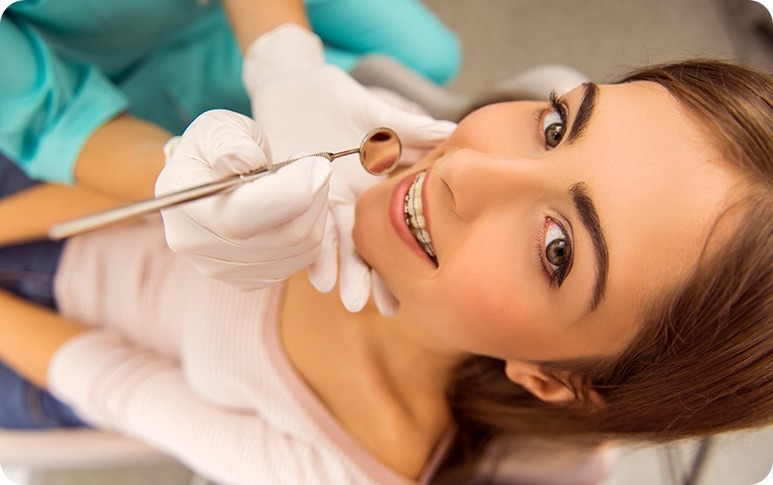
Sealants and Fluoride Treatment Calgary AB

Dental sealants are thin protective barriers that are typically applied on the deep grooved areas of back teeth, making grooves less deep and therefore less likely to retain plaque and food particles. Sealants are often used on children to seal out food and bacteria that can cause cavities. Sealants are a fast, simple, and painless procedure that protects against tooth decay. They are often administered at the same time as fluoride treatments, which can also help prevent tooth decay by strengthening tooth enamel. Applying fluoride is also a quick and easy procedure that is applied in the form of a highly concentrated rinse, foam, gel, or varnish, which is then absorbed into the enamel making teeth more resistant to decay.

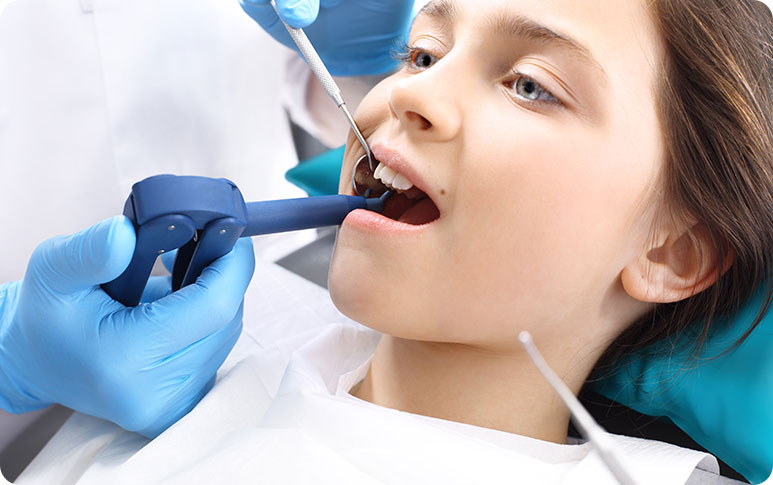
Dental Cavities

Children are at especially high risk for dental cavities. Tooth decay is the most common chronic disease in children. At Forest Lane Dental Clinic, our team is here to help you and your child every step of the way on the road to optimal oral health and wellness. Cavities are the result of specific types of bacteria producing acid, which destroys the tooth’s enamel and dentin, its underlying layer. The acids remove minerals from the enamel, leading to a cavity. The best way to help prevent your child from forming cavities is by having them brush their teeth at least twice daily, floss once daily, use fluoridated toothpaste as recommended by their dentist, and use antibacterial mouth rinses to reduce the levels of bacteria.
Space Maintainers
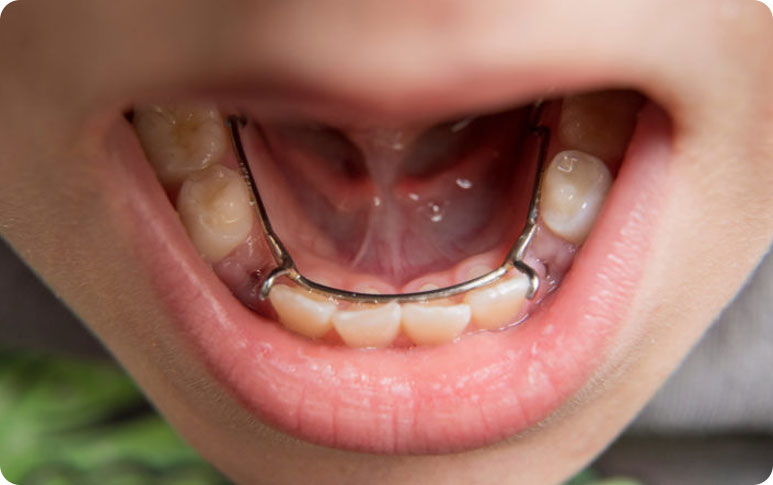
Space maintainers are commonly recommended for children to prevent their neighboring teeth from shifting or tipping into vacant spaces when they gradually lose their primary or “baby” teeth. Space maintainers are used to ensure that future permanent teeth will come in straight and not be affected by any tilted primary teeth, therefore helping to prevent possible future dental treatments. Space maintainers are custom-made dental appliances created in the form of a band or a temporary crown specifically for your child. Made out of acrylic or metal material, they are attached to one side of the space left by a lost tooth. When your child’s permanent teeth start coming in, the space maintainer is then removed by your dentist so that your child’s permanent teeth can come in straight.

Contact Our Calgary Children’s Dentist in SE Calgary at (403) 248-2280.
The Forest Lane Dental team is pleased to offer children’s dental and orthodontics to children of ALL ages, and we take special care to ensure that our youngest patients feel as safe and comfortable as possible throughout their visit with us. If you have any questions about the oral health needs of your child, or you would like to set up an appointment to discuss children’s dental and orthodontics, please call our dedicated Forest Lane Dental team at (403) 248-2280 and we will be happy to help.

